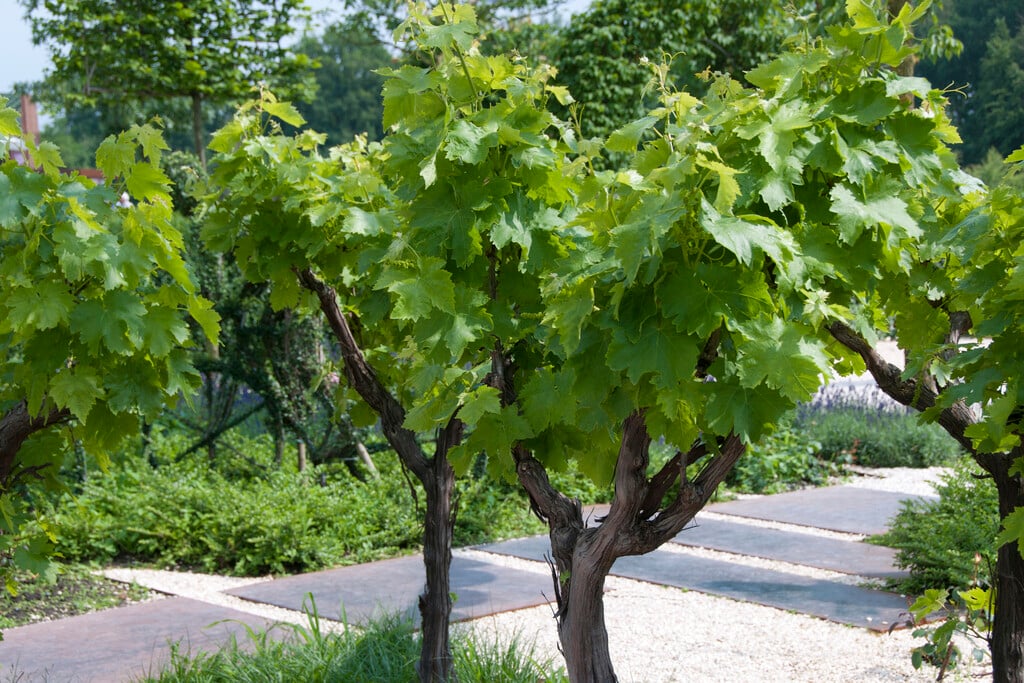Vitis vinifera
grape vine
A woody plant, climbing by tendrils, about 15-18m tall. Leaves are 3 or 5-lobed, coarsely toothed, to 15cm long and wide, with stalks half as long as the blade. Flowers are tiny, greenish, in loose panicles, fruit oval or globose grapes. This species has many named cultivars, selected for edible fruits, or for ornamental qualities as the leaves are variable in size, shape and colour
Size
Ultimate height
Higher than 12 metresTime to ultimate height
5–10 yearsUltimate spread
2.5–4 metresGrowing conditions
Moisture
Well–drainedpH
Alkaline, NeutralColour & scent
| Stem | Flower | Foliage | Fruit | |
| Spring | Green | |||
|---|---|---|---|---|
| Summer | Green | Green | ||
| Autumn | Green Yellow | Black Green | ||
| Winter |
Position
- Full sun
Aspect
South–facing or West–facing
Exposure
Sheltered Hardiness
H5Botanical details
- Family
- Vitaceae
- Native to GB / Ireland
- No
- Foliage
- Deciduous
- Habit
- Climbing
- Potentially harmful
- Pets (dogs): Harmful if eaten whether fruits are edible or ornamental - for further information and contact numbers regarding pets, see the HTA guide to potentially harmful plants
- Genus
Vitis are vigorous deciduous climbing shrubs with tendrils and attractively lobed leaves, insignificant green flowers followed by often edible fruits; some have excellent autumn foliage colour
- Name status
Correct
How to grow
Cultivation
Grow outdoors in full sun, in well-drained, humus-rich soil, preferably neutral to slightly alkaline, mulch to keep soil moist, and provide support; for more advice, see outdoor grape cultivation
Propagation
Propagate by hardwood cuttings in late autumn or winter, or by softwood cuttings or semi-ripe cuttings from late spring to midsummer or grafting onto Phylloxera resistant rootstocks
Suggested planting locations and garden types
- Cottage and informal garden
- Wall side borders
- Climber and wall shrubs
- Edible fruit
Pruning
Pruning is required to encourage flowering and fruiting, and to increase air circulation and so reduce the risk of disease: see grape pruning and training
Pests
May be susceptible to grapevine blister mite, glasshouse red spider mite, brown scale, woolly vine scale and spotted wing drosophila (fruit fly)
Diseases
May be susceptible to Powdery mildews, grey moulds, honey fungus and virus diseases. For further advice see grapevine diseases
Love gardening
Sign up to receive regular gardening tips, inspiration, offers and more
View our Privacy Policy
Get involved
The Royal Horticultural Society is the UK’s leading gardening charity. We aim to enrich everyone’s life through plants, and make the UK a greener and more beautiful place.
